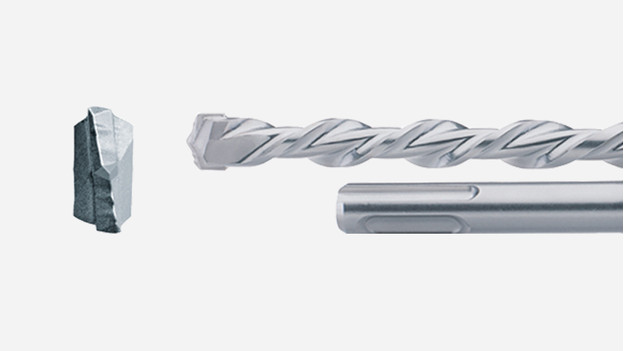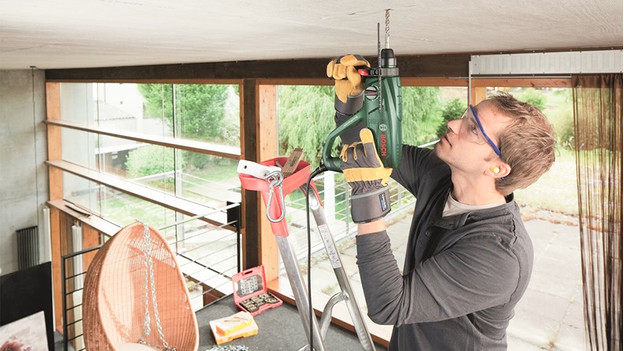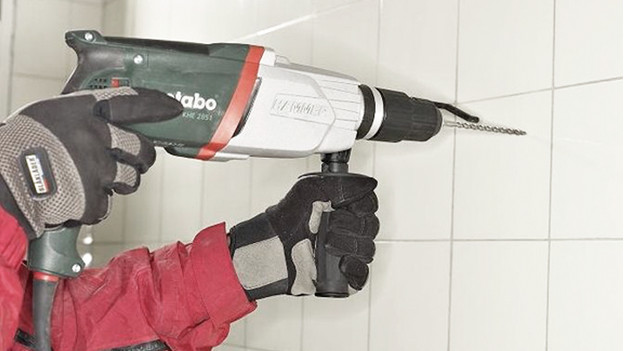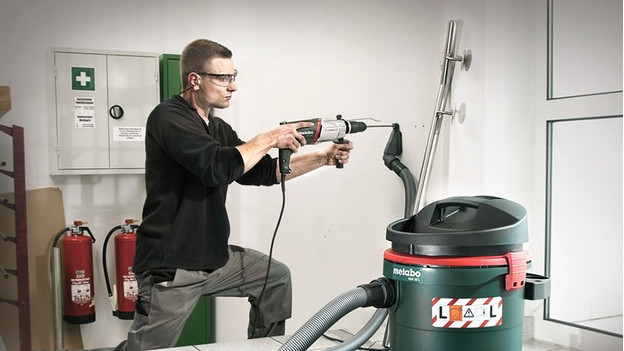
Tips for drilling concrete
Get started with drilling in concrete
Tip 1: choose the right drill bit.
Tip 2: use a depth stop.
Tip 3: be careful with pipes.
Tip 4: drill tiles with caution.
Tip 5: get rid of dirt.
Tip 1: choose the right drill bit

If you're drilling into concrete with a hammer drill, you should always use a drill bit suitable for concrete. Stone and concrete drill bits have a blunt head that drills away the material. The main difference between a stone and concrete drill but is the tip. The tip of a stone drill bit is made of the same material as the rest of the drill bit, while the tip of a concrete drill bit is made of tungsten carbide or widia. This makes the tip very hard and suitable for drilling in concrete.
Tip 2: use a depth stop

It's not just the width of your plug that is important when drilling a hole in concrete. You also measure the length to know how deep the drill hole needs to be. If you don't go deep enough, the plug won't fit. Go in too far, and it'll sink in. A depth stop makes sure you drill accurately down to the millimeter. Put the plug on the drill head and use it to set the depth stop.
Tip 3: be careful with pipes

You don't want to hit a water pipe or electrical wiring when drilling. In the worst case, you might have to open up your entire wall to repair the damage. That's not what you want if all you wanted is to hang up a small rack in your kitchen. You can prevent drilling into pipes with a wall scanner. This device tells you if the wall contains any iron-containing materials. That way, you can stay away from pipes and concrete reinforcement while drilling.
Tip 4: drill tiles with caution

Sometimes, you first have to drill through a layer of tiles before you reach concrete. You can't simply drill through tiles, the risk of damaging the tile is way too high. Carefully drill through the tile without the hammer function but with a tile drill bit first. After this, switch to the full power of the hammer drill with a concrete drill bit. An extra tip is to use painting tape on the tile to prevent the drill bit from slipping away.
Tip 5: get rid of dust

To create a neat drill hole, pull the drill back and forth a couple of times at a low speed. Use a dust collector or ask someone to hold the vacuum under the drill hole. If the hole is deep enough, pull back the drill while it's still spinning at a low pace and use the vacuum to remove the last bit of grit that's left in the hole. That way, you'll be sure the plug will fit.


